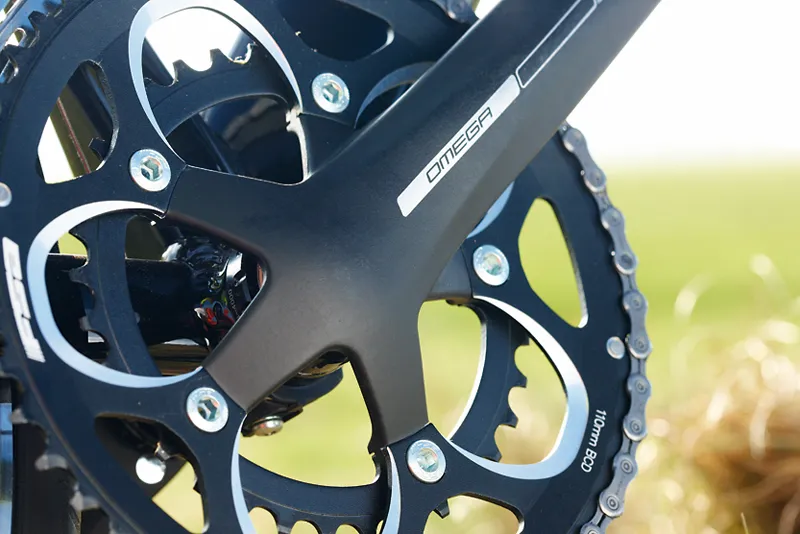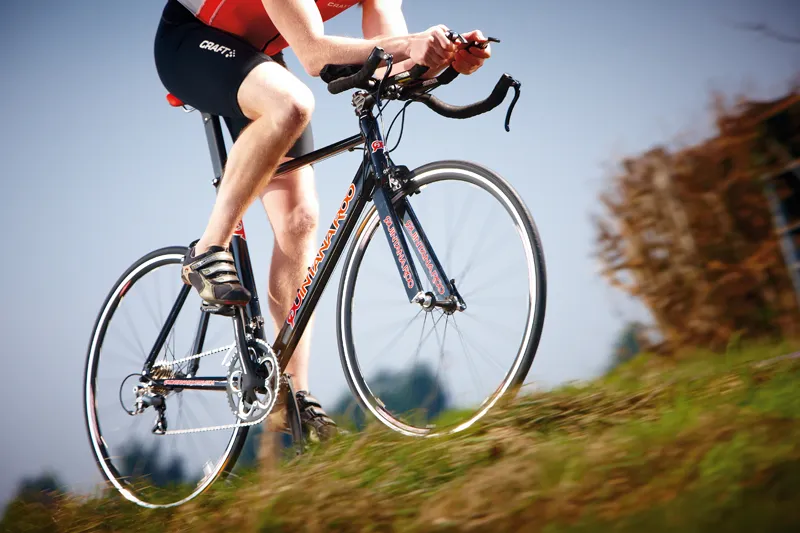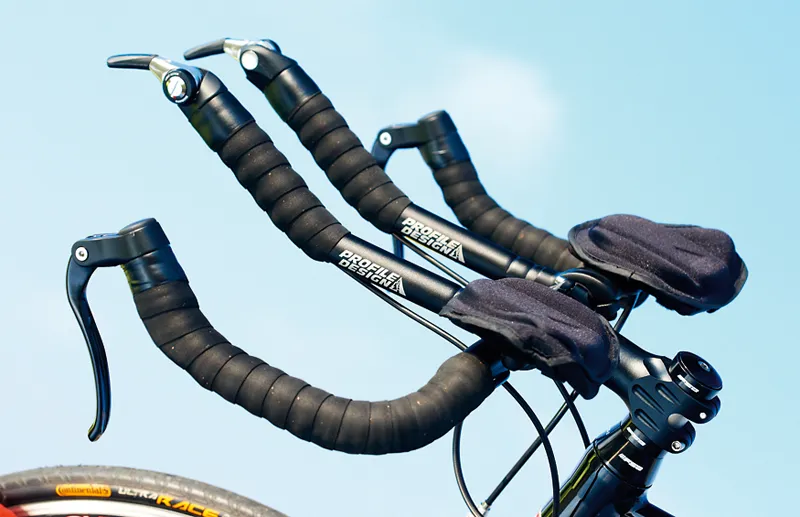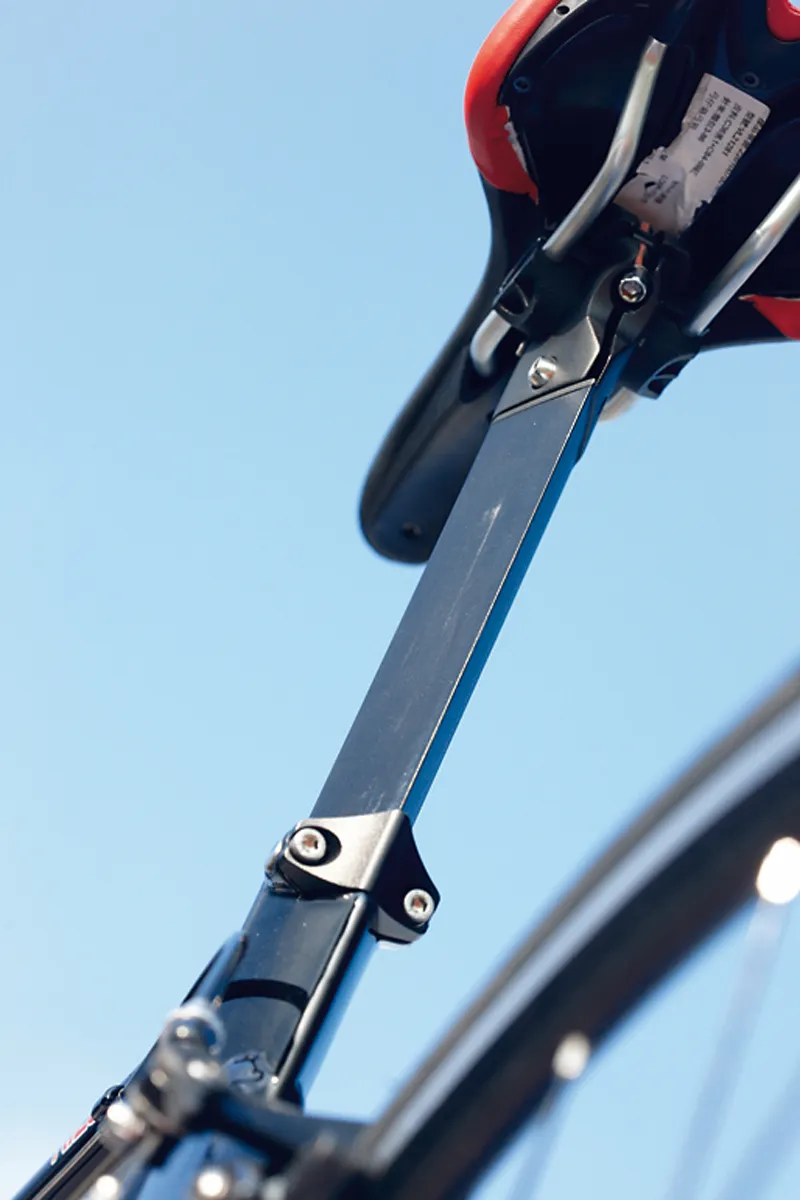This entry-point bike from the longest-established triathlon bike makers gets a front-end facelift for ergonomically efficient long-distance cruising comfort. It's a super-friendly, relaxing and reassuring ride that'll still get you round a flattish course against the clock quicker than a conventional road bike. Low kit value, high weight and a limp power reaction leave it off the pace, though.
Ride & handling: Rock-steady and comfortable, but no pinpoint precision powerhouse
Quintana Roo’s bike fitting experience is obvious in the immediately comfortable fit of the Kilo. The front end is higher than on most other aero bikes and there’s definitely less potential to drop it without swapping to a particularly drooped stem. We didn’t ever feel overly windswept in a tuck though, and the forward angle of the saddle helps reduce cramping in the inguinal area and hamstrings after long low-cadence sessions.
The skinny fork blades and narrow frame elements slip through the wind easily, without being too bothered by gusting side winds, even if we weren’t paying attention. The handling is rock steady too, letting you totally relax into the ride and reducing overall stress further. It’s not the quickest turning or most twitch responsive if you suddenly hit a patch of potholes or field opening tractor muck, and traction feedback is low in slippery conditions.
When sight lines were clear we were swinging through roundabouts without even thinking of coming out of the tuck and tickling the brakes though, and we never worried about fishing food out of pockets or checking computers on the go. Comfort levels from bars to bum are high too, removing the sting from the worst roads and leaving you fresher overall however far your bike leg or training session takes you.
The downside of this ‘softly softly’ ride feel is that stamping on the pedals or wrestling with the bars is definitely a less dynamic experience. The long forward extensions of the cow horn bars can be made to flex noticeably if you’re really trying to milk the last out of your calves over a summit.
There’s also a definite sense of rubbery chain power loss through the cranks and frame when you’re trying to lever some speed through the bike, which is really obvious when trying to crack out a batch of interval sprints. You can still get to the small end of the block in the big ring if you switch to a patient spin not a stomp though, and if wind is an issue or you’re tapping out over 30kph, it’s still faster on flat roads than a conventional bike.
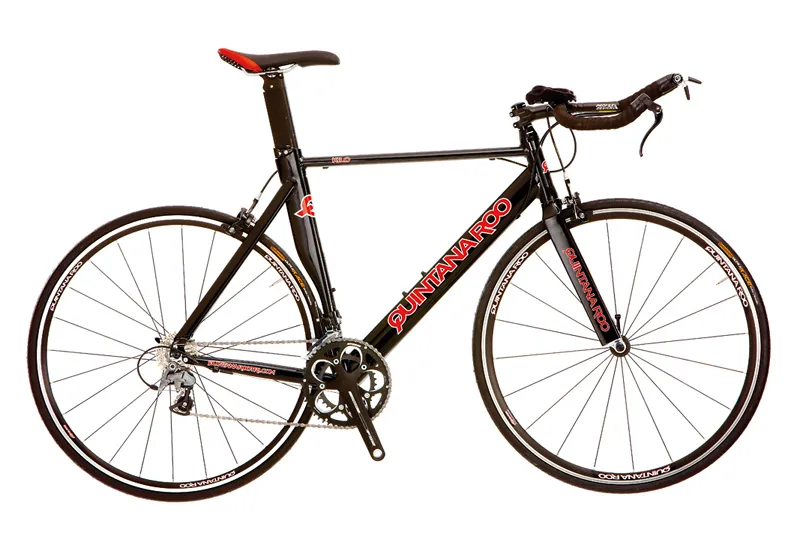
Frame & equipment: Weight is relatively high, and kit isn’t great for the money
Q Roo were the first mainstream manufacturers to introduce steep-angled seat tubes on their aero bikes to open up the pelvis area for better in-tuck breathing. This much-copied FIST geometry is still very much present in the 78.5-degree seat angle of the Kilo. In recognition of the huge numbers of new riders flooding into the sport with less flexibility (and often more flab), Q Roo have fitted a taller head tube for a less intimidating drop to the bars.
The skinny top tube also keeps comfort levels high despite the ‘wind tunnel designed’ seatstays and down tube. The seat tube gets a hydroformed section change from squared to finned to wrap it round the rear wheel, with a long alloy aero seatpost sliding into the top. The adjustable wheel setting thumbscrews built into the horizontal dropout slots are a useful touch for accurate alignment too.
While external cabling doesn’t look as slick as internally routed controls it’s a lot easier for a home mechanic to work on. The wide range of sizes makes finding a good fit easy. The aero seatpost and clamp-on front mech are definitely basic in look and the whole bike aesthetic is more workhorse than ‘wow’. The relatively high weight of both frame and fork is an obvious downside, particularly if you're planning to upgrade later.
Skinny hubs in the centre of the Alex-rimmed, Q Roo stickered wheels keep them relatively light, despite tough training- rather than racing-standard tyres. However it’s not a lightweight kit package overall. Shimano Ultegra/105 gears with Dura-Ace tip shifters are par for the price, but the FSA Omega cranks use a flexier, narrower diameter axle and lower cost bottom bracket bearings than the FSA sets found on other bikes at this price. The Profile base bars are the basic, bouncier round section ones too, and although the ZBS bars are much fancier, they lack the adjustability of the higher rise T2+ version.
